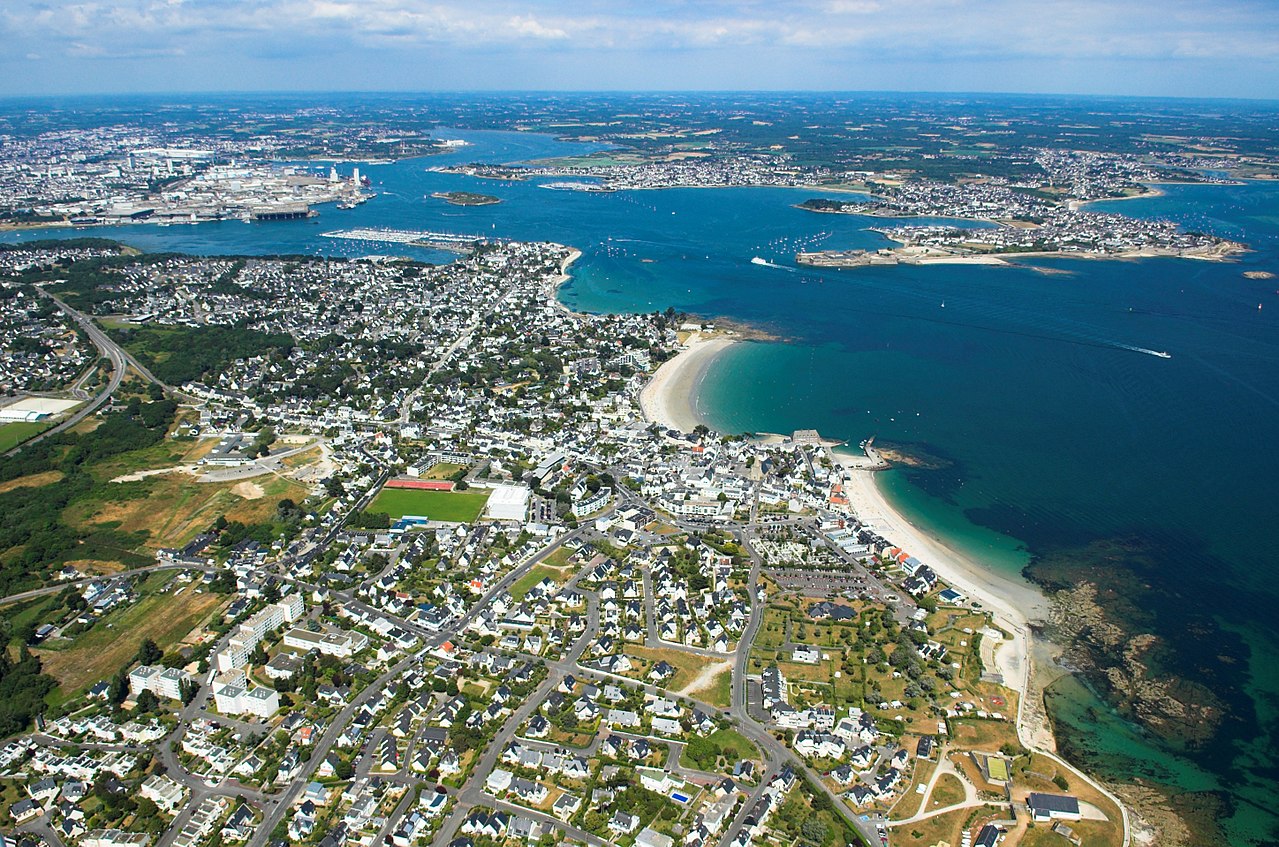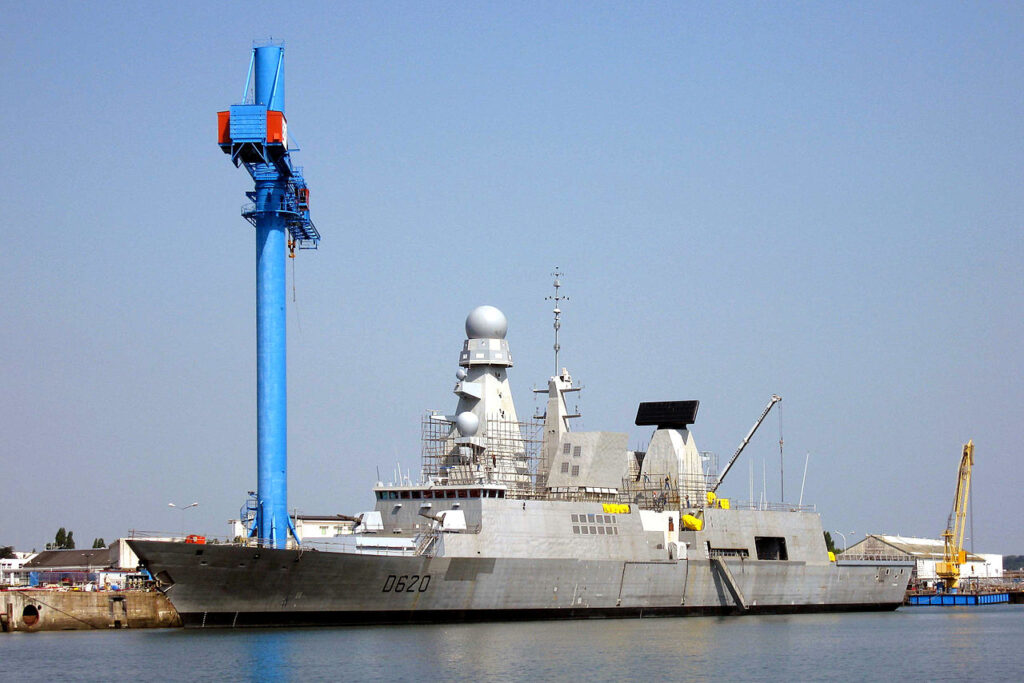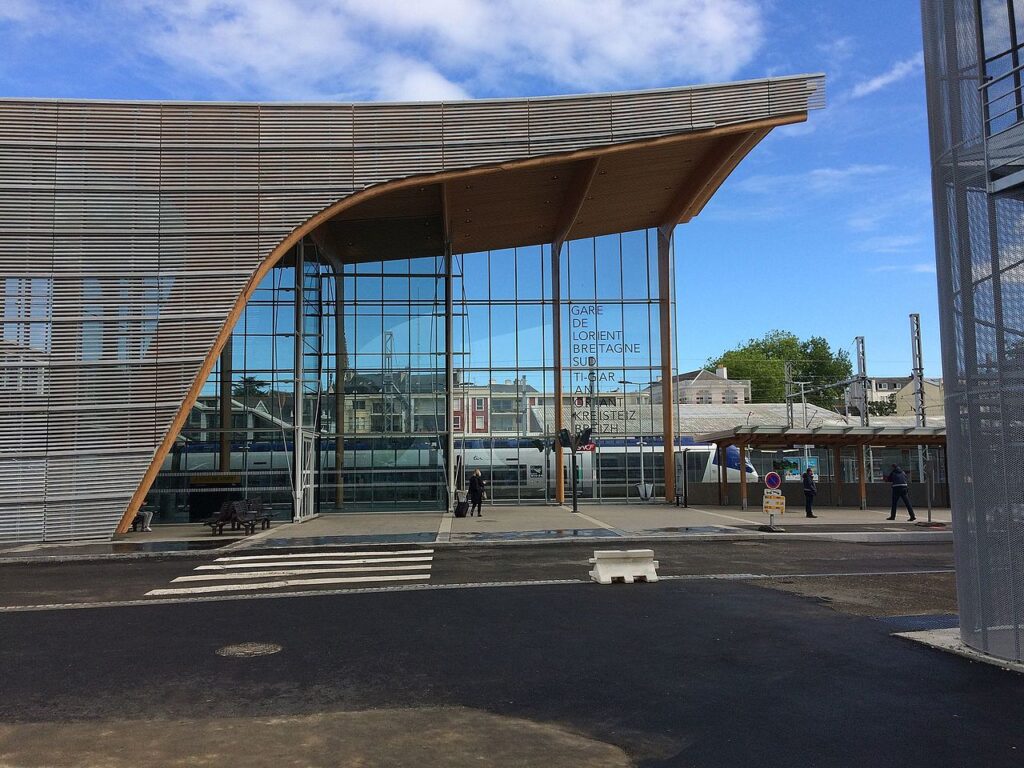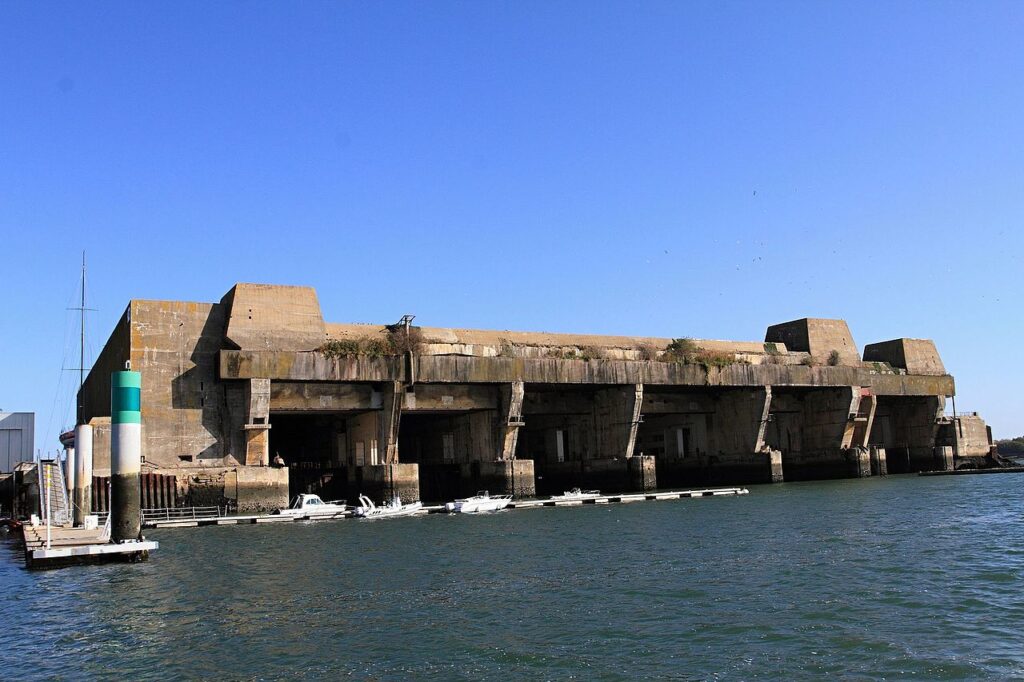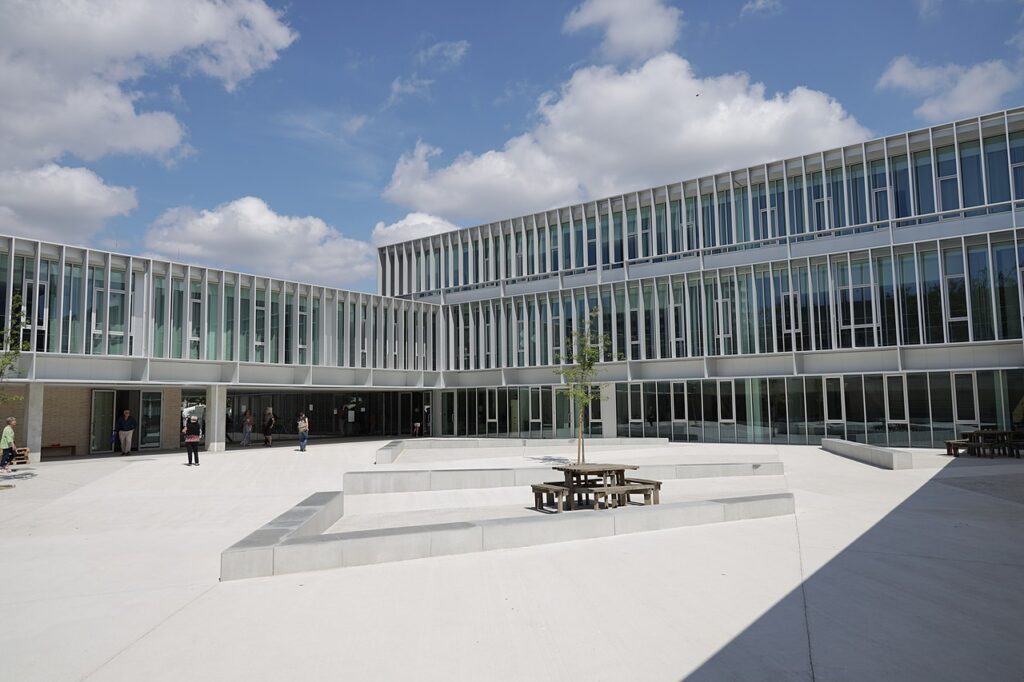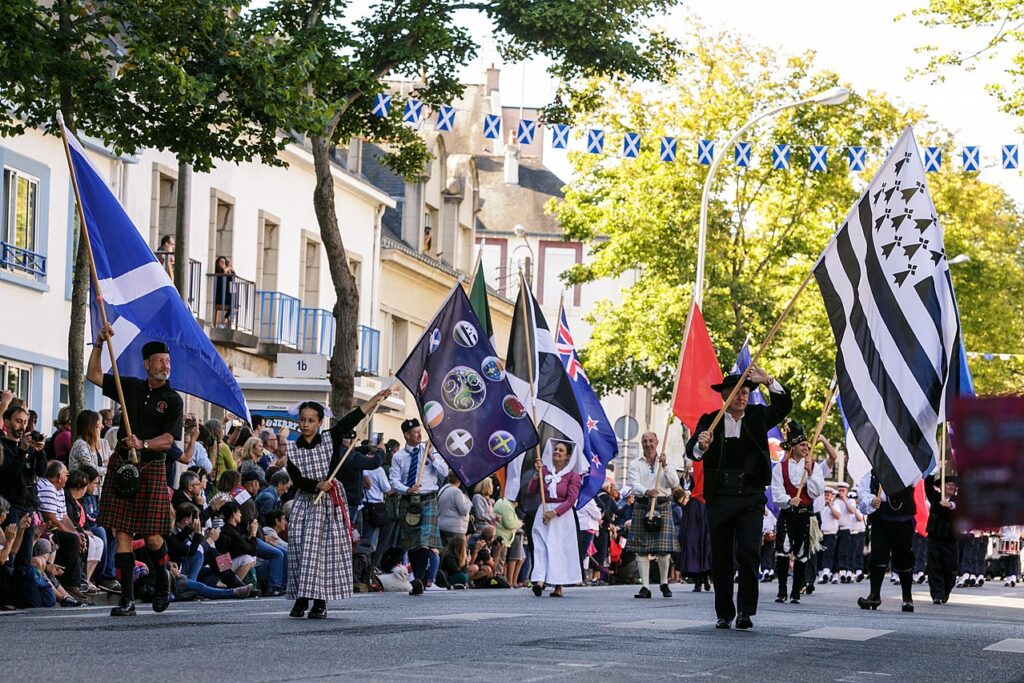Lorient is a town (French “commune”) and seaport in the Morbihan department of Brittany in North-Western France. Lorient is located on the south coast of Brittany, where the Scorff river and the Blavet river join to form the roadstead of Lorient(fr), before discharging into the Atlantic Ocean.
The economy of the city is turned towards maritime activities, Lorient hosting one of the main French military arsenals , as well as the largest French fishing port in value with the port facilities of Keroman. Lorient also has an offshore racing pole, the main pole of the Sailing Valley , a commercial port in Kergroise , and facilities dedicated to passenger transport. These installations earned the city its nickname of “city of five ports”.
| Country | France |
|---|---|
| Region | Brittany |
| Department | Morbihan |
| Mayor (2020–2026) | Fabrice Loher |
| Area1 | 17.48 km2 (6.75 sq mi) |
| Population (2017-01-01) | 57,149 |
| Density | 3,300/km2 (8,500/sq mi) |
| Time zone | UTC+01:00 (CET) |
| Summer (DST) | UTC+02:00 (CEST) |
Economy
Ports
Lorient is commonly referred to as La ville aux cinq ports (“the city of five ports”): military, fishing, commercial, passengers and yachting.
- Keroman fishing port (fr): It accounts for 3,000 jobs (including 700 fishermen) and 130 fishing vessels.
- Kergroise cargo port : With 2.6 million tons of cargo per year (including oil, cattle fodder, sand, containers), it ranks first in Brittany
- Marinas : mooring berths are dispatched on Lorient (370), Kernevel (1,000), Port-Louis (450), Gâvres (57) and Guidel (102).
- Passenger ships : each year, more 457,500 passengers set sail to the nearby islands of Groix and Belle-Île-en-Mer.
- Military : though no longer a French Navy base, new warships are still built at DCNS, docking temporarily on wharves along the Scorff river.

Industry
From its founding, shipbuilding has always been of great importance to the city. It still builds warships, mainly frigates. There is also a substantial industrial base in Keroman to support the fishing fleet.
Transport
Lorient South Brittany Airport is situated just west of the city at Lann Bihoue, and it has direct flights to Paris. There are also direct flights to London and Porto in the Summer.
The Gare de Lorient is the railway station, offering connections to Quimper, Nantes, Rennes, Paris (less than three hours by TGV) and several regional destinations.
Health
The Scorff Hospital , the largest hospital in southern Brittany.
The hospitals of Lorient and its region are grouped together within the Groupement hospitalier de Bretagne-Sud, and represents the third largest pole in the Brittany region, behind those of Rennes and Brest. Lorient has the two largest establishments in this grouping, with the Hôpital du Scorff, inaugurated in 2013, and the Mutual Clinic at Porte de l’Orient.
Education
Schools in Lorient belong to the Academy of Rennes.
Tertiary
- CPGE at Dupuy-de-Lôme and Saint Joseph-La salle lycées.
- Université de Bretagne Sud.
- Institut universitaire de technologie de Lorient
- École nationale supérieure d’ingénieurs de Bretagne sud
- École supérieure d’art.
- École nationale de musique et de danse.
Military
The Commando Jaubert storming a ship in a mock assault
Active units based near Lorient:
- Naval Commandos (Commando Marine): the special forces of the French Navy.
- Lann-Bihoué Naval Aviation Base: Five squadrons are based in Ploemeur. Their tasks include airborne early warning, maritime patrol and air-sea rescue.
Lorient Submarine Base
Lorient was the location of an extensive submarine base, built by the Germans in World War II and used subsequently by the French Navy. Between November 1940 and January 1942 a number of gigantic reinforced concrete structures were built. including three on the Keroman peninsula. They are called K1, K2 and K3. The base was capable of sheltering thirty submarines.
Culture
Events
Around thirty events are organized every year in the city, some of which are national (Music Festival , Spring of the Poets), regional (Fête de la Bretagne), or strictly local.
Each year in August since 1970, Lorient hosts the Festival interceltique, bringing together artists from all the Celtic world (Brittany, Cornwall, Scotland, Ireland, Wales, Galicia, Asturias, Australia, Acadia and Isle of Man). Each year, a Celtic nation is chosen as honored guest. It is one of the biggest festival in Europe by attendance (800,000 people for the 40th edition)

Cultural facilities
The Hydrophone occupies one of the cells of the Lorient submarine base .
Several Lorient facilities are dedicated to live performance . The largest of them, the Théâtre de Lorient , hosts around 130 performances every year, with a capacity of just over 1,000 spectators. It is supplemented by smaller infrastructures in various districts of the city, such as the Théâtre de la Chimère, and the rooms of La Balise (district of Kervénanec), Le City and Le Scénith (district of Bois du château).
The city also has a dozen art galleries . The largest of them, the Galerie du Faouëdic, is located in a wing of the town hall. Its offer is supplemented by public ( Le Lieu , or the art gallery of the European School of Art in Brittany ) or private (Keroman, workshop 13).
The district of Keroman / Kergroise also knows an important activity of street art, with many achievements visible on the walls of the wasteland of district, and other structures like the Hotel Gabriel can occasionally host exhibitions .
Several museums are also present in Lorient. Within the walls of the Lorient submarine base, the Pays de Lorient submarine museum and the “La Flore” submarine are grouped together , and guided tours of the submarine base are also organized. In the immediate vicinity is the Cité de la Voile Éric Tabarly , dedicated to sailing.
The city also has a network of 3 municipal media libraries, to which are added university libraries, but also 2 archive services (municipal, and of the National Navy ).
Breton culture
Breton headdress from the Lorient region.The bagad of Lann-Bihoué , one of the two bagad associated with the city.
The city of Lorient is the center of a variety of dialect of Breton Vannes , Breton Bas-Vannes , historically spoken in the city and about fifteen other neighboring towns.
The Breton costume specific to the city is distinguished by several attributes. The female costume, the use of which is historically recorded in 29 municipalities around Lorient, appeared around the 1870s. The headdress is made up of two parts: a hat, trapping the hair, and lace wings. The two parts are fixed between them by pins. The female costume also includes an apron, which can also be of embroidered or painted floral or decorative patterns.

In the artistic domain, the city hosts three Celtic circles dedicated to Breton dances : the “Brizeux” circle, “Bugale en Oriant”, and “Armor-Argoat”. Two bagad are also associated with Lorient, the Bagad Sonerien An Oriant and the bagad of Lann-Bihoué. Groups like Djiboudjep (songs of sailors) or Soldat Louis (Celtic rock) are also from the city.
Other monuments
- The Morbihan Chamber of Commerce and Industry
- The Keroman submarine base
- The so- called “stilts” building
- The Villa de la Marne
- The passive defense shelter
- The Discovery Tower
- The reservoir
- The tuna Biche , the last dundee tuna in the Atlantic.
Gastronomy
The Breton cake , a local specialty.
The city is the source of several original recipes. The Kari Gosse , blend of spices from the Indies, is established at the end of the xix th century in the city, and accompanies seafood. At the same time , the “Lorientais cake” was also created in the Lorient region, in Port-Louis , known since under the name of Breton cake , and popularized from its origins by the bakeries of the city.
Seafood products are also present in the local cuisine, due to the activity of the fishing port of Keroman . The city is notably the first port for langoustines in France , and this is one of the specialties of the city, alongside hake for fish. La Cotriade , a fish soup made from unsold fishing remains, is also notable in Lorient.

Breton cake , a local specialty
Sports
Football
The most popular club in Lorient is FC Lorient, which currently play in Ligue 1, after winning Ligue 2 in 2020. They are nicknamed les Merlus. They play their home fixtures at Stade du Moustoir.
Sailing
The converted submarine base has been home port to several skippers and their sailing teams:
- Jérémie Beyou (Delta Dore),
- Pascal Bidégorry (Banque Populaire),
- Franck Cammas (Groupama), winner of the 2011–12 Volvo Ocean Race
- Samantha Davies (Roxy),
